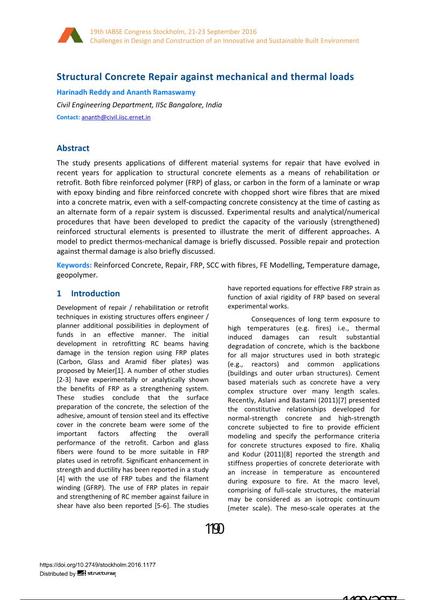Structural Concrete Repair against mechanical and thermal loads

|
|
|||||||||||
Détails bibliographiques
| Auteur(s): |
Harinadh Reddy
(Civil Engineering Department, IISc Bangalore, India)
Ananth Ramaswamy (Civil Engineering Department, IISc Bangalore, India) |
||||
|---|---|---|---|---|---|
| Médium: | papier de conférence | ||||
| Langue(s): | anglais | ||||
| Conférence: | IABSE Congress: Challenges in Design and Construction of an Innovative and Sustainable Built Environment, Stockholm, Sweden, 21-23 September 2016 | ||||
| Publié dans: | IABSE Congress Stockholm, 2016 | ||||
|
|||||
| Page(s): | 1190-1197 | ||||
| Nombre total de pages (du PDF): | 8 | ||||
| Année: | 2016 | ||||
| DOI: | 10.2749/stockholm.2016.1177 | ||||
| Abstrait: |
The study presents applications of different material systems for repair that have evolved in recent years for application to structural concrete elements as a means of rehabilitation or retrofit. Both fibre reinforced polymer (FRP) of glass, or carbon in the form of a laminate or wrap with epoxy binding and fibre reinforced concrete with chopped short wire fibres that are mixed into a concrete matrix, even with a self-compacting concrete consistency at the time of casting as an alternate form of a repair system is discussed. Experimental results and analytical/numerical procedures that have been developed to predict the capacity of the variously (strengthened) reinforced structural elements is presented to illustrate the merit of different approaches. A model to predict thermos-mechanical damage is briefly discussed. Possible repair and protection against thermal damage is also briefly discussed. |
||||
